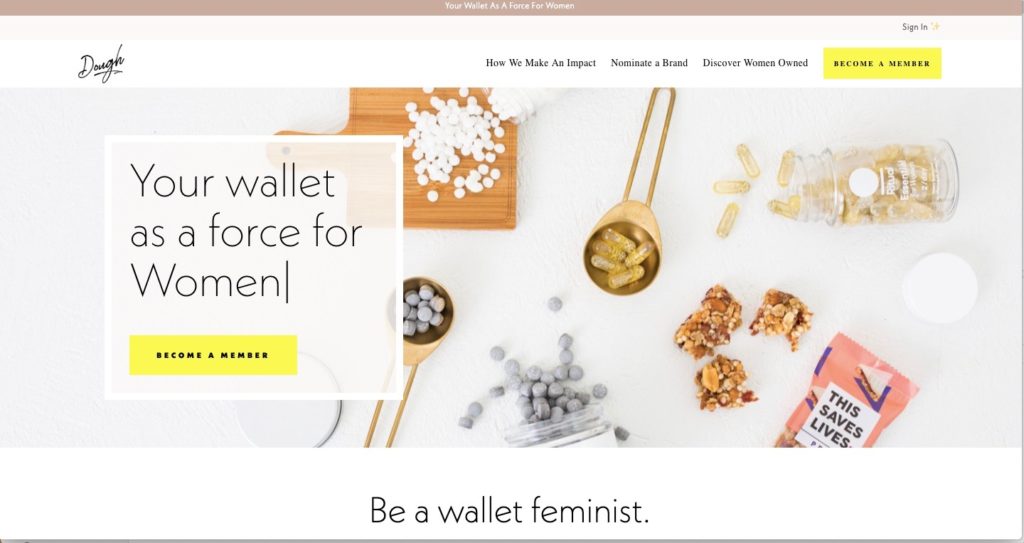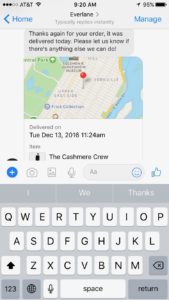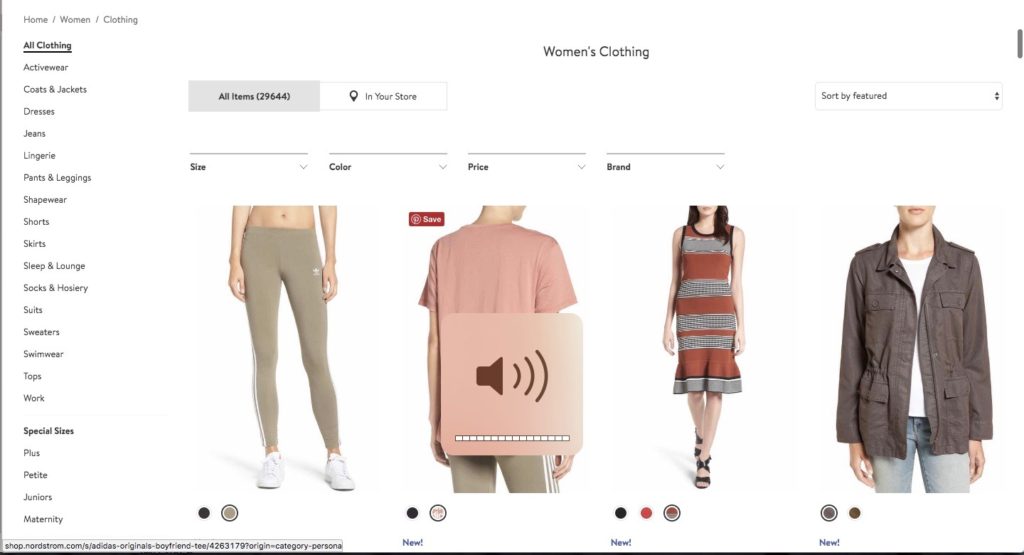Meha Agrawal is the founder and CEO of Silk + Sonder, a self-care membership experience for modern women that makes daily and proactive mental wellness easy and fun from the comfort of women’s homes. Silk + Sonder gives women a holistic suite of tools – a monthly wellness planner rooted in positive psychology and bullet journal techniques, a mobile app that offers peer-to-peer support and accountability, and IRL / virtual experiences to foster community. Meha has raised over $4m in capital to date, with the most recent seed round being led by Redpoint Ventures.
Note: This interview is condensed and edited from a recent Retail X Series podcast episode.
Meha, you’ve had success in writing cold emails to investors, who ultimately invested in you. Tell us about one success you’ve had with cold outreach.
Our second investor into the company was the result of a cold outreach. After our first check, I started to get more strategic about who I wanted to bring into the company and aligned to our values and the strategic advice I was looking for. So I was very intentional about who I wanted to bring into the round. Actually, a series of folks in our preseed round were the result of cold outreach, and one was the former president at Pinterest/ former director of monetization at Facebook who had started a company around disconnection and limited screen time. So I knew he had an appetite to solve some of the same issues we are focused on and that he was aligned to the values that were core to S+S. I knew he was an operator in a similar space, but didn’t know if he was an active angel investor. I figured that cold outreach centered on exploration and curiosity was the right path. So I took my chances and wrote a thoughtful note on what we were working on, why I thought he would be a fit, and asked him if he invests. That’s a great example of someone that I didn’t even know was an active investor, but I focused on why he might be a great investor and a good fit for Silk + Sonder.
Why did you decide to do cold outreach versus trying to find a warm intro?
In that particular case, I had lukewarm connections to that investor, and those were more or less acquaintances, or friends of a colleague, or former colleagues that I hadn’t kept in touch with in a while. And that felt inauthentic to me, to reach out to them on a whim to have them make a warm intro, because then I would have to explain what we were doing, why I wanted the introduction and justify my case up front. Instead, I could put all that effort and thoughtfulness up front into a cold email. And then if I need an extra nudge, I could reach out to those warm intros. But if you’re going to put in that thoughtfulness, you might as well put that work into a very thoughtful, personalized email to that person directly. Also, I like to be in control of the input, even if I can’t control the output. And when you request a warm intro, you don’t know what context is being shared, and you don’t know how strong their connection is to your target. And it honestly felt a little like soliciting versus being honest and transparent about what you’re building and why the investor would be a fit.
And to be honest, going direct on cold outreach and being successful with it in the early days made me be a little more strategic and thoughtful about the warm introductions I actually did request. My request for warm introductions are really personalized and easy to forward so it’s easy for the person to forward them.
What are the elements that make a cold email great?
There’s a tactical strategy and there’s also an authenticity layer to all of this. I’ll start with the authenticity layer.
- Know Your Style – The first step is to understand your tone and voice and style so that you can convey yourself in the email. For example, I have a very warm demeanor, so I tend to ignore those rules like don’t use exclamation points and happy faces in an email. I think of who’s reading the email – it’s a human with feelings, not a robot. And I’m sending these emails during a time when the world needs an emotional health solution like S+S. So I ensure that my vibe lands within the context of the email. I recommend that you remember you are a human too, so try to eliminate the desire to know all the answers right off the bat, and make sure that trickles through the voice. Don’t just use a cookie cutter template – you need to layer your own authentic style throughout it. That’s number one.
- The Subject Line: Of all the elements, the subject line is the hardest. I would A/B test different subject lines to see which would get the best response, like “Connecting!” versus something with “Interested in investing…” I like the vague “connecting” type of subject lines since you don’t know much about the person, so being open and curious and not so transactional is key. So pick a subject line that is not so marketing-y and salesy.
- Research Your Investors: You need to be targeting the right investors. What is that common thread between you and the investor? That might be that they invest in your space, have something to do with your past background, or things you have in common – connect it to something personal. For S+S, I was targeting a lot of former founders and operators. I thought they could connect with the burnout and stress that comes from building a company. Figure out why this person would be the right fit with your company.
- Stroke Their Ego – Explain why you’re reaching out to them or how you found out about them. What are you specifically impressed by in their background? Did they write something that you were moved by? In the first couple of sentences, you want to tell them why you’re impressed by them. Everyone loves some words of affirmation from time to time!
- Get to the Point – After stroking their ego, tell them why you’re reaching out and include 1-2 sentences on what you’re building with the progress thus far. Don’t be afraid to share numbers – showing them that you are both metrics driven and vision driven will buy them into your idea sooner. If you’re a founder, chances are you have an ambitious streak – be proud of it, most people don’t have that entrepreneurial bug and it’s important for your bold, risk-taking nature shines through! Ask if they would be interested in what you’re building. Do ask if they are actively investing and if so, you’d love to meet with them.
- Why They’re a Fit – This is the most important piece – so explain why you think they would be a fit (and tie it back to what you mentioned you were impressed by them on). Remember that you don’t want just any money, but you also want the brains behind that money. So be thoughtful about this. Don’t be afraid to be personal about it. If you read an article about them and find a connection point, like the same hometown for instance, use that. It’s not stalking, it’s research!
- Clear Ask – Don’t simply ask if they are going to invest – that’s just too transactional and misses the opportunity to build a relationship. Instead, ask to have a chat, and offer up some options that show an openness from you to be willing to be available and flexible. That makes it easy for the investor – it’s just a yes or no from them.
Tell us more about the comment you made about fit – “is this somebody you want on your cap table.”
In my case, I started to think about the values I’m looking for in investors, much as you would do for a romantic partner or your team. The qualities I look for are their thoughtfulness, are they smart and bright, are they a problem solver and do they have a sense of humility. That layer of consistency allows you to expand the investor pool – from those you see on Twitter or on investor lists. Instead, you think about where else are new investors? Where are the folks who have made their early money from tech startups and want to support other founders? That helps you be creative in your approach to find the investors that share your values.
How many cold emails did you send out during your preseed round and what sort of responses did you get?
I actually don’t have a number for you. But what I can tell you was that those cold emails had a far higher conversion rate than other methods. About 20-30% of them converted. Instead of seeing it as a numbers game, I focused on conversion rate, by making the initial list very targeted. Because of that, most of my emails got a response, and 20-30% ended up investing.
Mostly that great conversion rate has to do with the first paragraph in the email as we discussed above. So that even if they’re not ready to invest, they can come back and say “thanks for your email, I’ve already invested in a similar space” or “thanks for your kind words.” So you do get a response.
If you didn’t get a response at all, would you continue to follow up with those investors?
Yes, I would follow up but with something generic acknowledging that they’re probably really busy. Something like “just wanted to bump this up to the top of your inbox” or something like that. It needs to come from a place of confidence, and not of fear of rejection. Don’t recap the original email – keep it short and sweet. And that actually worked for me in one instance – one of the leads in our preseed round needed a few followups.
Did you ever send a cold email that maybe didn’t get a response and then later get a warm intro to the same investor?
I typically didn’t position it that way – there were times when an investor might mention to another investor that S+S was raising and did they want an introduction, but I didn’t reach out with a warm introduction to the same investor. But sometimes investors talk to other investors and that buzz can make an investor take a second look. And that can also happen when you don’t toot your own horn in the fundraising process – in preseed rounds, where the impressiveness of the founder can be a motivation to invest, sometimes that just doesn’t come across in the deck or emails. As a founder, you need to make sure you show you have the grit and talent to build a company.
Have you used cold emails for any other purpose besides fundraising?
Absolutely. Cold emails work for hiring, especially through cold LinkedIn messages. In certain cases, you don’t have to be as specific with hiring cold outreach as with investors, but having a little bit of that personalization goes a long way.
If you take the pressure off to “close” every candidate or every investor or vendor partner, you’ll find that most often people want to be of help. Any cold email that didn’t lead to a full-time position at S+S, has led to an advisor position, or a desire to be helpful in other ways. I have become more appreciative of that and you never know where your cold email might lead you, and oftentimes it’s planting a seed for a future opportunity.
Sample Cold Email to an Investor
Subject Line: [Something warm / not too long / generic like “connecting”]
[Name of Investor],
I love / am blown away / am impressed by etc. [write something about their accomplishments / stroke their ego in an authentic way]. I’m building a [explain what your business is, the problem you’re solving, and for whom you’re solving that problem for]. I love [connection point to something about their background / explain the shared value or connection].
I’m reaching out because [specify why you’re reaching out – angel investor? advisory?] – we’re doing a round [explain the terms if you have them] to [explain what you will use the funds for]. [Explain why you think they’d be a great fit].
Are you available [specify a time frame and medium – call vs. coffee etc. – make it convenient for them].
[Ending Sentiment – e.g., looking forward to hearing from you.]
Best,
[Your name]



 Mobile Commerce
Mobile Commerce












